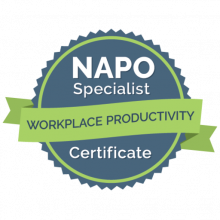Good meetings start in advance. Following are our top 10 actions to take before a meeting to make them more efficient:
1 | Use a meeting agenda template.
One to five days in advance, send a meeting agenda including these items:
- Subject. Make clear what project or subject matter you’re going to cover.
- Location. Define a specific space. Will you meet in the conference room, the kitchen, someone’s office, over the phone/web, in the lobby downstairs, at a nearby coffeehouse?
- Time. Include both a start and an end time.
- Facilitator. Name one person to be the meeting driver. (For repeating meetings, consider rotating the facilitator role. Build the leadership calendar as a group, and share the wealth of being in charge.)
- Purpose. Define what you want to accomplish by having the meeting. Is it to gather information, make a decision, plan, share information, solve a problem, or complete a team task within the meeting?
- Topics. Outline what topics will be discussed—assigning time parameters and speakers for each.
- Logistics. List any teleconference/web conference numbers and passcodes.
2 | Assign pre-meeting duties.
Provide pertinent documents for review and consideration. Set expectations by detailing pre-meeting duties participants need to complete—even if it’s only asking them to be prepared to answer a particular question during the meeting.
3 | Select only essential participants.
Invite only people who absolutely need to be there. If there are topics not pertaining to the entire audience, allow participants to attend only the parts that pertain to them. Then, ensure all participants understand their reason for attending and their role in the meeting.
4 | Schedule carefully.
Consider that people are often most distracted with incoming commitments first thing in the day, so try to avoid early morning meetings. Fridays are also difficult times for people to keep meeting commitments.
5 | Determine & confirm roles.
Assigning roles to attendees helps keep people engaged.
- Facilitator leads the group through agenda systematically at an appropriate pace and encourages full participation by all
- Timekeeper helps the group keep on track with the timing of the agenda, perhaps using simple hand signals or signs to suggest there are 10/5/0 minutes remaining
- Action Monitor captures and summarizes next actions, who is assigned to each, by when they are due, and sometimes how the work will be completed
- Scribe visibly posts key ideas, points, and comments (on whiteboard, sticky notes, etc.) during discussions; attends to parking lot of off topic, yet important ideas
6 | Send reminders.
Send an email or text reminder a short time (2-24 hours) before the meeting.
7 | Less is more.
Keep it short. Take longer to prepare. Write an agenda with 1) your objective, 2) the points you need to make to accomplish it, and 3) the questions you should answer. Now cut out the parts everyone already knows and the parts people don’t need to know.
8 | Check audio/visual.
Ensure audio/visual is available and documents are open and ready to be accessed. Consider turning off IM. Make sure there are markers/erasers if using a whiteboard. Have paper, stand, and markers if documenting on large flip pads, etc.
9 | Apply the 30/15.
- For an online or virtual meeting host, reboot your machine 30 minutes prior to the start. This clears short-term memory, which can reduce your chances of an embarrassing mid-session screen freeze. And to minimize glitches, it’s always a good idea to keep as few programs open as possible and to turn off any possible distractions (email, screen saver, other phones, instant message).
- For an online or virtual meeting participant, join the meeting 15 minutes prior to start. This will ensure you get logged in without any technical difficulties. Because the meetings are virtual, both early arrivals allow for productive work to be completed once decidedly present.
10 | Vary the structure.
Adopt multiple meeting structures:
- Daily check-in (5 mins; activities for the day; stand; keep administrative; don’t cancel)
- Weekly tactical (45-90 mins; tactical issues; lightning round/key metric progress review/real-time agenda; don’t cancel)
- Monthly & ad hoc strategic (2-4 hours; long-term; prepare & do research; engage in conflict)
- Quarterly off-site (1-2 days; strategy/team/personnel/competitive/industry; out of office; limit social)



